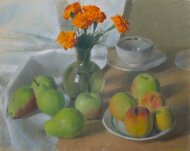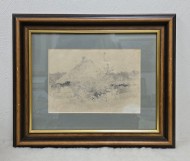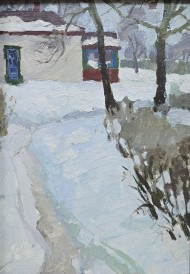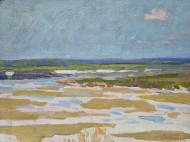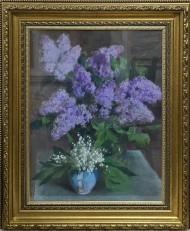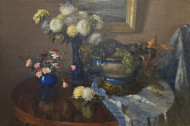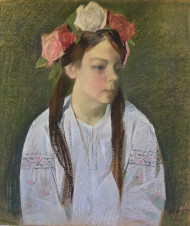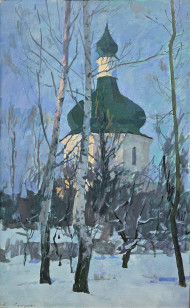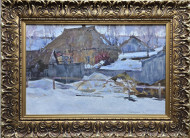- Home
- Lomykin Konstantin - People's Artist of Ukraine
Lomykin Konstantin - People's Artist of Ukraine
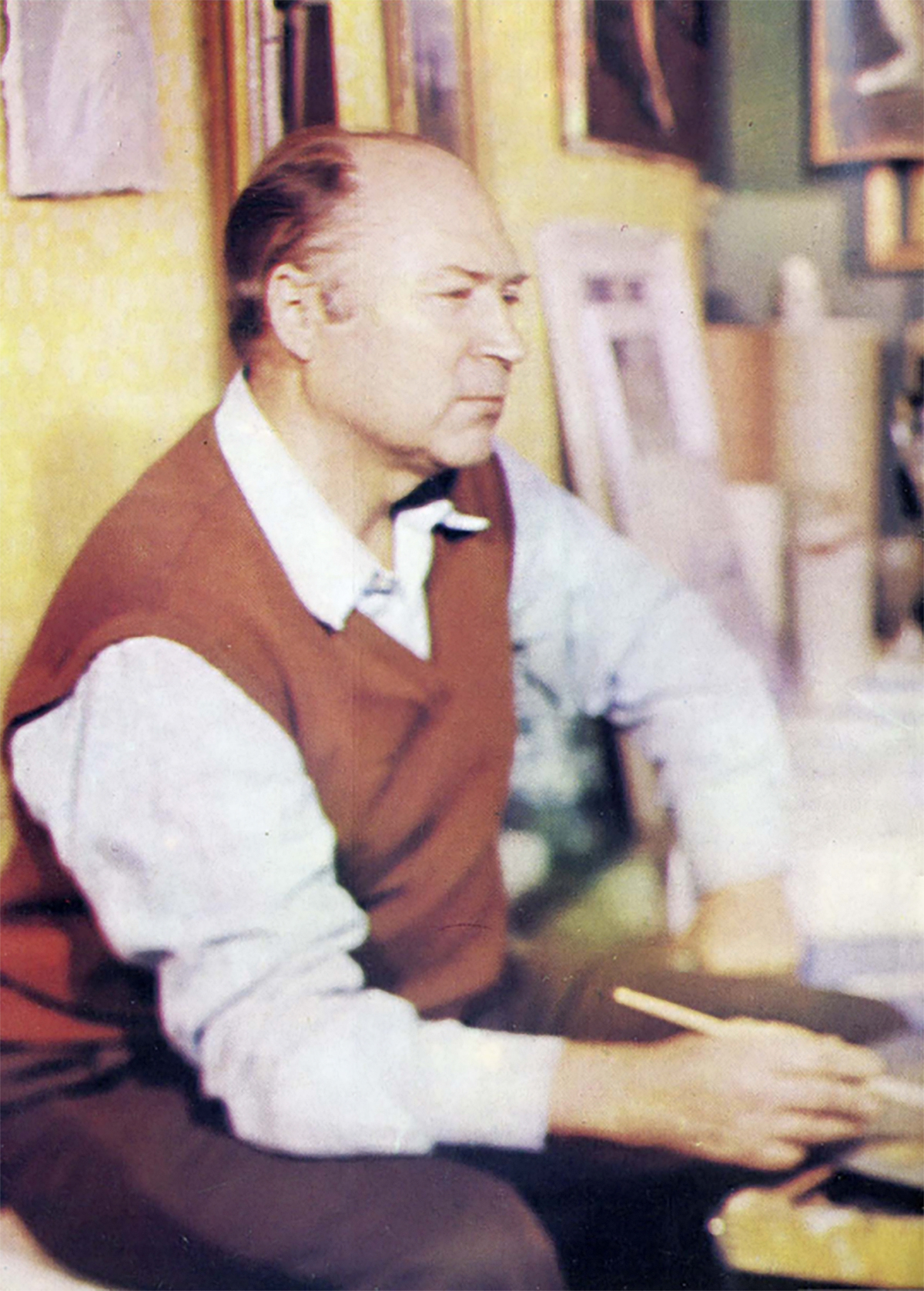
Konstantin Lomykin: People's Artist of Ukraine and Master of the Odesa School of Painting
Konstantin Matveevich Lomykin (1924–1993) was a prominent Ukrainian painter and graphic artist, People's Artist of Ukraine (1984), and Honored Art Worker of the Ukrainian SSR (1971). His work is a vibrant continuation of the traditions of the Odesa school of painting, renowned for its attention to fleeting natural states and deep psychological insight.
Life and artistic formation
Konstantin Lomykin was born on August 19, 1924, in Hlukhiv, Sumy region. His early passion for drawing shaped his destiny. After the tragic death of his father in the mid-1930s, his mother, Sofiya Yosypivna, moved the family to Odesa, a city that became Lomykin's second home and a wellspring of inspiration.
During the Great Patriotic War, Lomikin, while mobilized into the army, continued to draw, sketching his fellow soldiers. These front-line works earned him a referral to the Odesa Art College after his demobilization in 1946. Here, he studied under acclaimed masters such as Leonid Muchnik, Nikolay Pavlyuk, and Nikolay Shelyuto.
Lomykin's diploma work, "Young Patrons" (1952), immediately gained recognition, being accepted for republican and then all-Union exhibitions. This success marked a turning point for his official recognition and granted him creative freedom. Among his notable early paintings that solidified his status were the monumental "Oath of Bohdan Khmelnytsky over the Body of a Tortured Cossack" (1954), as well as the lyrical pieces "Spring Has Come" and "During the Occupation" (1964).
Diverse body of work: from social canvases to ballet scenes
Konstantin Lomykin's artistic legacy is remarkably multifaceted. Beyond the large-scale social paintings that brought him renown, the artist actively worked in the genres of:
- Lyrical Landscape: In his landscapes, Lomykin sought to capture the fleeting states of nature, conveying the interplay of light and shadow. His approach to plein air painting was particularly dynamic: he worked with a dozen broad brushes, one for each color, to quickly capture the changing conditions. This method allowed him to complete paintings in a single session, even at dusk, using a miner's headlamp.
- Portraiture: Lomykin demonstrated a profound insight into the characters of his subjects in his portraits.
- Still Life: His still lifes are characterized by a subtle sense of color and composition.
- Ballet Scenes: The artist had a special love for ballet. Ballerinas from the Odesa Theater frequently posed for him, and later, his second wife, sculptor Feliya Felchuk, became his constant model. This theme was inspired by French Impressionists like Renoir, Degas, and Monet, whom Lomykin sincerely admired. His personal collection included albums of these masters, as well as works by Dvornikov, Kolesnikov, and Arkhipov.
Artistic environment and legacy
Konstantin Lomykin actively engaged with fellow artists. His friendships with Albin Havdzinsky and Hennadiy Malyshev fostered their mutual creative development. They went on plein air excursions together and spent time at the House of Creativity of the Union of Artists of Ukraine in Sedniv.
From the late 1970s, as foreign art dealers from Japan, Italy, and the Netherlands became active in Odesa, Feliya Felchuk played a crucial role in preserving Lomykin's legacy. She carefully selected works for sale while hiding genuine masterpieces. It was during this period of "foreign invasion" that many authorized replicas appeared, which art historians continue to analyze. These creative "emergencies" often concluded with cheerful gatherings and theatrical performances using costumes borrowed from the Odesa Theater.
Konstantin Lomykin's last works were created in 1987–1988, when he began to show symptoms of hereditary Parkinson's disease, which had previously claimed the lives of his mother and sister. The artist bravely fought the illness, attempting to paint with his left hand, but the disease progressed. For the last five years of his life, Konstantin Matveevich was bedridden.
Konstantin Matveevich Lomykin passed away on July 9, 1993, in Odesa. His works are held in art museums across Ukraine, including the Odesa Art Museum, as well as in numerous private collections worldwide – in Japan, France, Greece, Germany, Italy, Portugal, and other countries.
- 30
- 60
- 90




